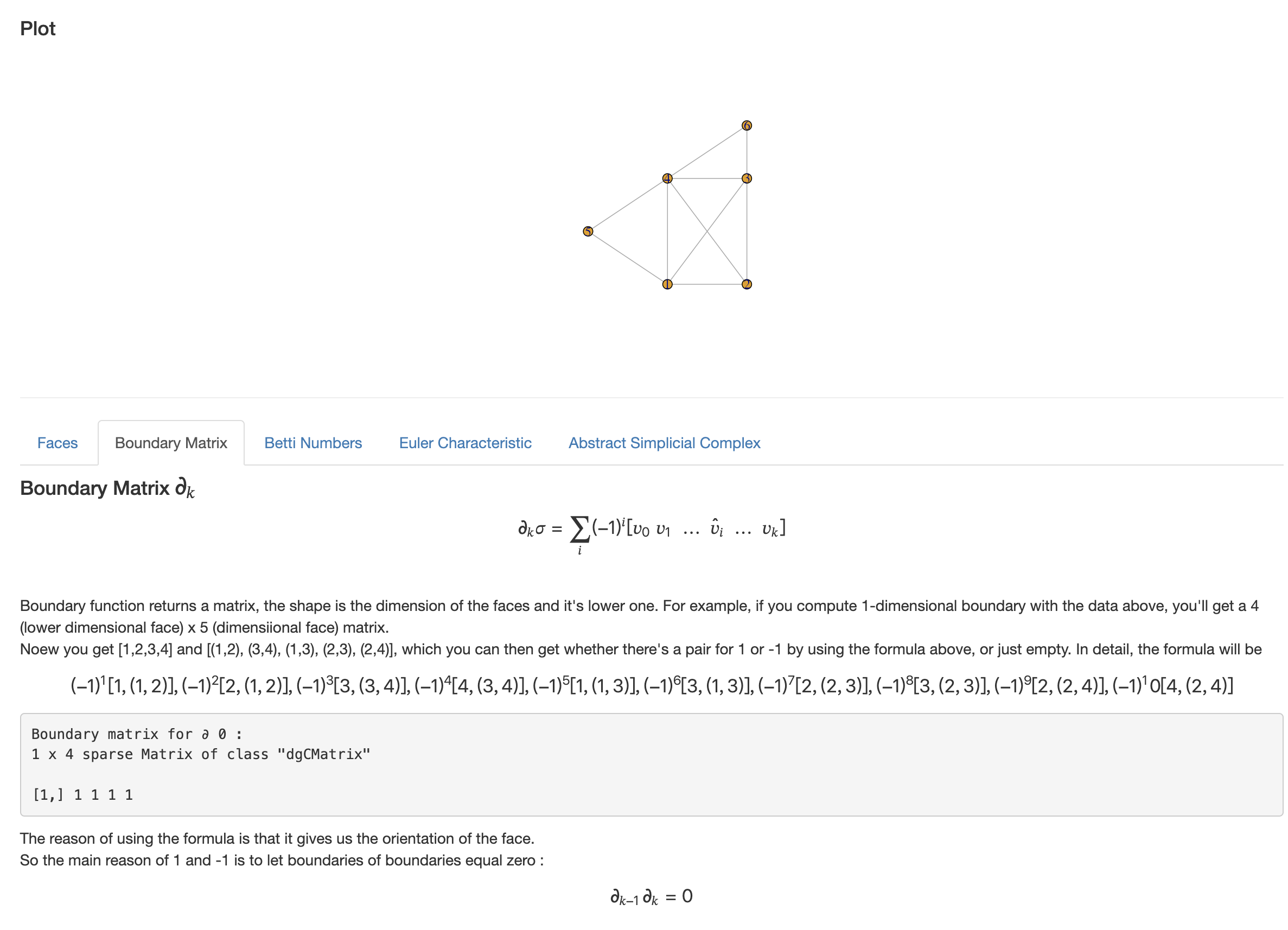Try this playground to get familier with all of the concept that will be used in TDA.

The hardware and bandwidth for this mirror is donated by METANET, the Webhosting and Full Service-Cloud Provider.
If you wish to report a bug, or if you are interested in having us mirror your free-software or open-source project, please feel free to contact us at mirror[@]metanet.ch.
This package aims to provide a user-friendly TDA application. Although many TDA libraries, such as Dionysus, PHAT, and GUDHI, have been developed in Python and C++, I believe it would be valuable to implement simplicial complex functionality in R, making it compatible with the wide range of statistical methods available in R.
Example code
# Get its' simplices by specific epsilon
points <- matrix(c(0, 1, 1, 0, 0, 0, 1, 1), ncol = 2)
epsilon <- 1.5
vr_complex <- VietorisRipsComplex(points, epsilon)
# You can find its' topology feature by using these functions
faces(vr_complex$simplices, target_dim=1)
boundary(vr_complex$simplices, 1)
betti_number(vr_complex$simplices, 1, tol=0.1)
euler_characteristic(simplices, tol=0.1)
abstract_simplicial_complex(simplices, 2)
# Plot the Vietoris-rips complex
plot(
vr_complex$network,
layout = points,
vertex.label = 1:nrow(points),
vertex.size = 12,
edge.arrow.mode = 0,
asp = 1
)
# Filtration, Boundary reduction, and Persistence informations
F <- build_vr_filtration(points, eps_max=1.2)
res <- boundary_info(F)
pairs <- extract_persistence_pairs(F, res$last_1, res$pivot_owner)
plot_persistence(pairs)Playground
Try this playground
to get familier with all of the concept that will be used in TDA.

These binaries (installable software) and packages are in development.
They may not be fully stable and should be used with caution. We make no claims about them.